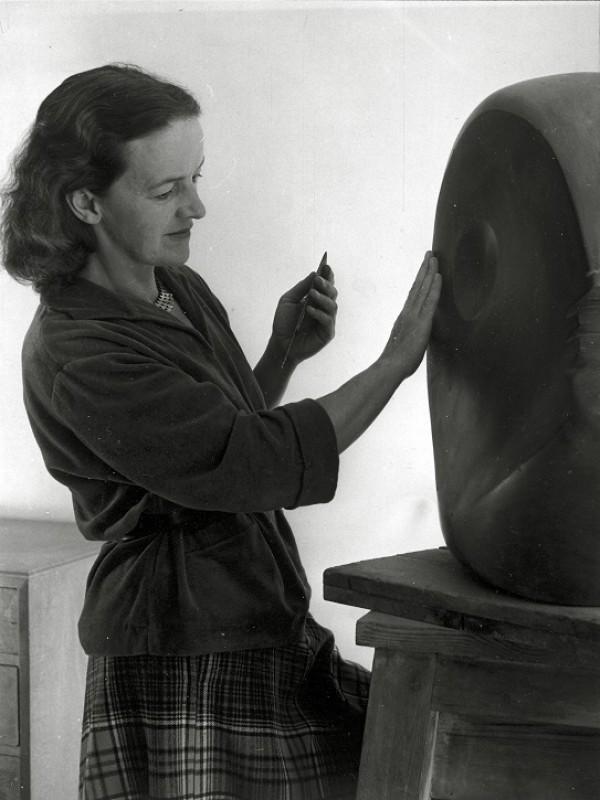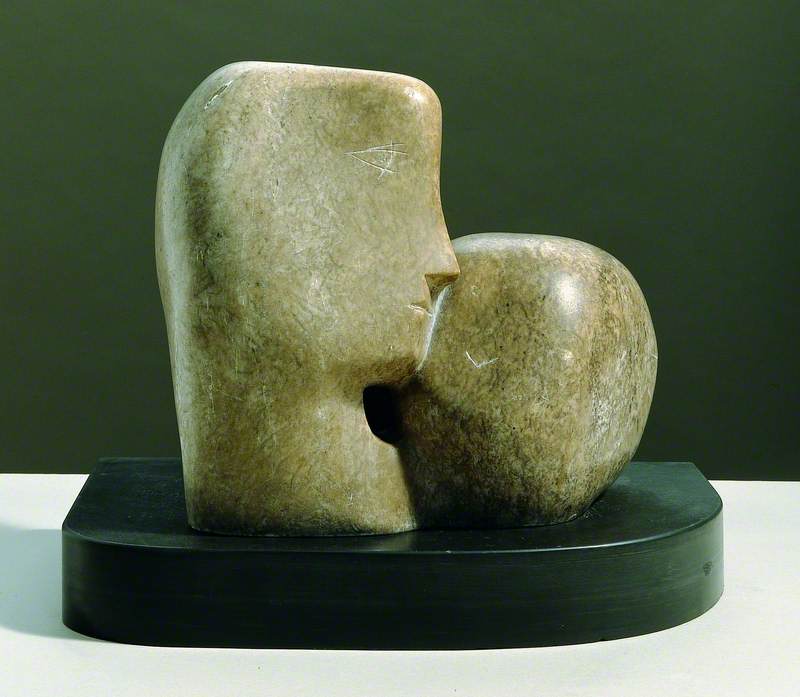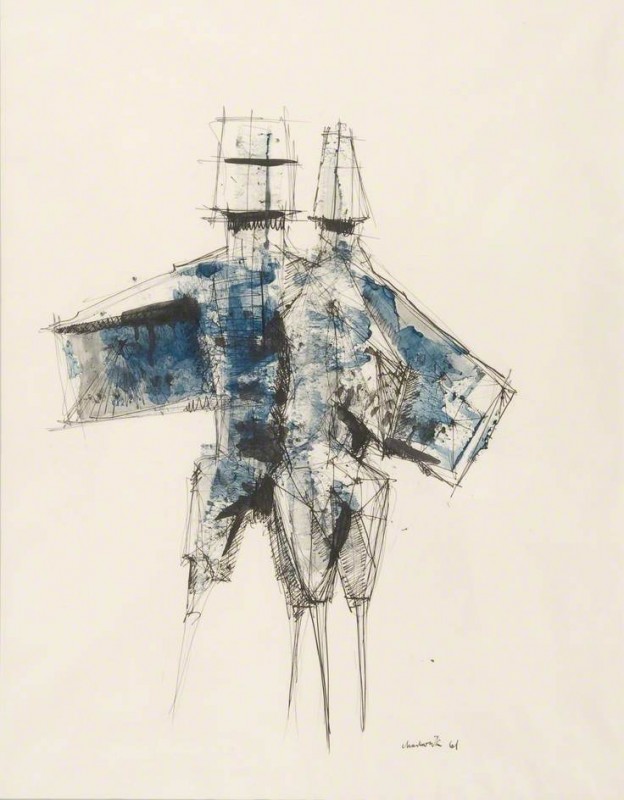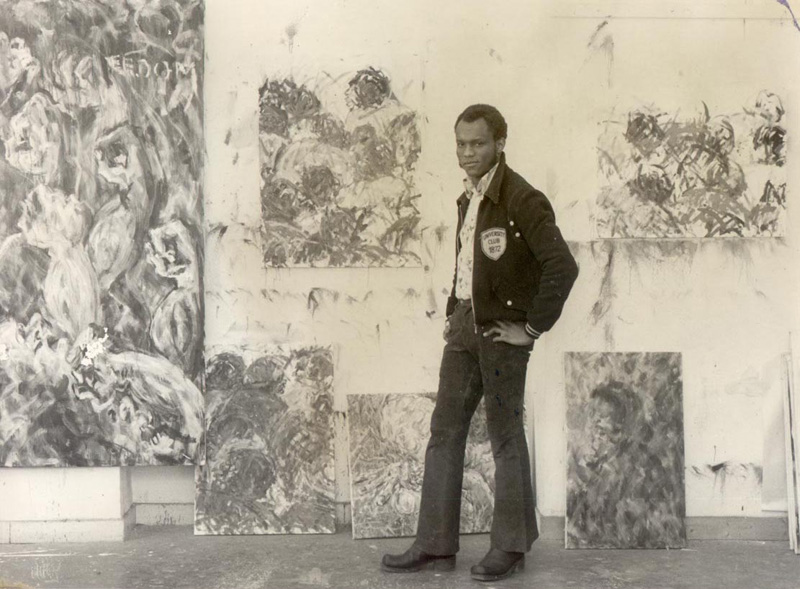'Four Figures Waiting'
This three-minute audio clip describes the sculpture Four Figures Waiting by Morris Singer Art Foundry Ltd (founded 1927) and Barbara Hepworth (1903–1975).
Four Figures Waiting
(cast seven of an edition of nine, plus reserved copy)
1968
Barbara Hepworth (1903–1975) and Morris Singer Art Foundry Ltd (founded 1927)
Full audio description text
This sculpture of four bronze figures by Barbara Hepworth was cast in 1968. It is about half a metre tall and standing on a plinth which is just over a metre in height. The four figures are abstract and have no features; they are smooth, solid forms. They stand only a hand-sized distance from one another, each facing a different way on a dull bronze, square base, which is 3cm high, and is pitted and uneven. By contrast, the figures are polished to a high shine; they reflect each other, the surrounding gallery and us as we look at them.
The figures are almost identical; each is narrower at the top and bottom with a bulging middle, and a flat top. All have one perfectly flat side and one rounded side. However, they each differ very slightly in height, and one has a circle-shaped hole through its chest, of about 6 cm diameter.
On one face of the base, Barbara Hepworth's signature is engraved, with the year 1968 and the edition number 7/9. On another side, the name Morris Singer is etched, which was the foundry that cast the sculpture.
Hepworth was primarily a sculptor. Whilst a student at the Royal College of Art in the 1920s her works were quite naturalistic, but she already showed a tendency to pare down subjects to simple forms, and by the mid-1930s her work was entirely abstract.
Four Figures Waiting echoes many of the major themes of her career. Following her period of abstract work, figures started to re-enter Hepworth's sculpture in the late 1940s, and in her later work she explored their interaction, grouping them in multiples and using them as symbols of human harmony.
The pierced hole is also a dominant aspect of Hepworth's work. She began to pierce her carvings in 1931. Much has been written of the meaning behind these holes, with theories discussing their delicacy, femininity, and the light and reflective quality they give her work. Hepworth herself said that she gained immense pleasure from piercing 'in order to make an abstract form and space.'
Hepworth began to work in bronze in the mid-1950s. Before this, she had worked almost exclusively in wood and stone. Using bronze enabled her to cast small editions of her work with between three and nine copies of each sculpture. Another cast of Four Figures Waiting can be found at the Hakone Open-Air Museum in Japan.
Art UK and VocalEyes
This audio description was created by VocalEyes for Art UK Sculpture, a national project to document and increase access to the UK's publicly owned sculpture. This description is one of 25 representing sculpture collections across the UK.



























